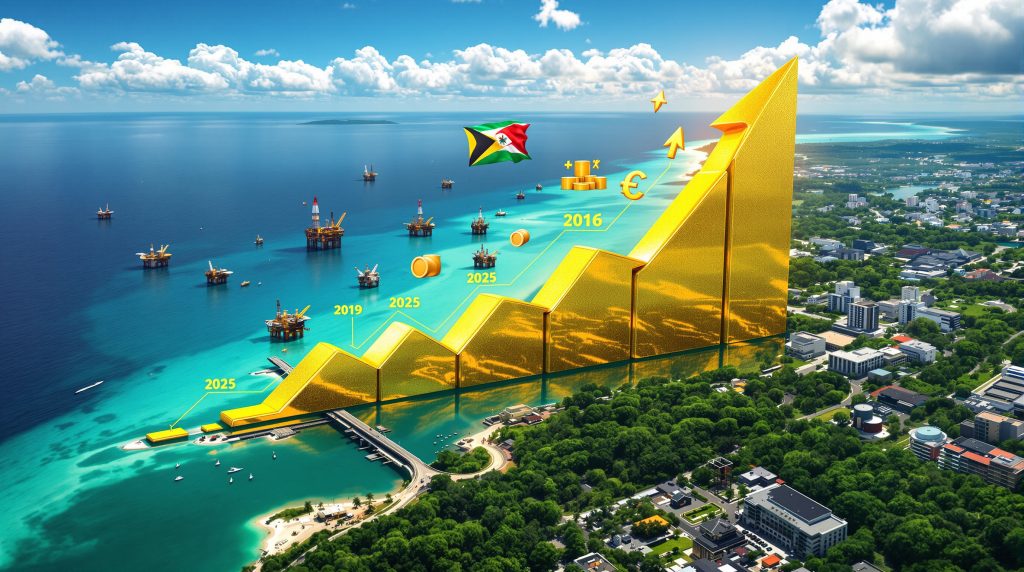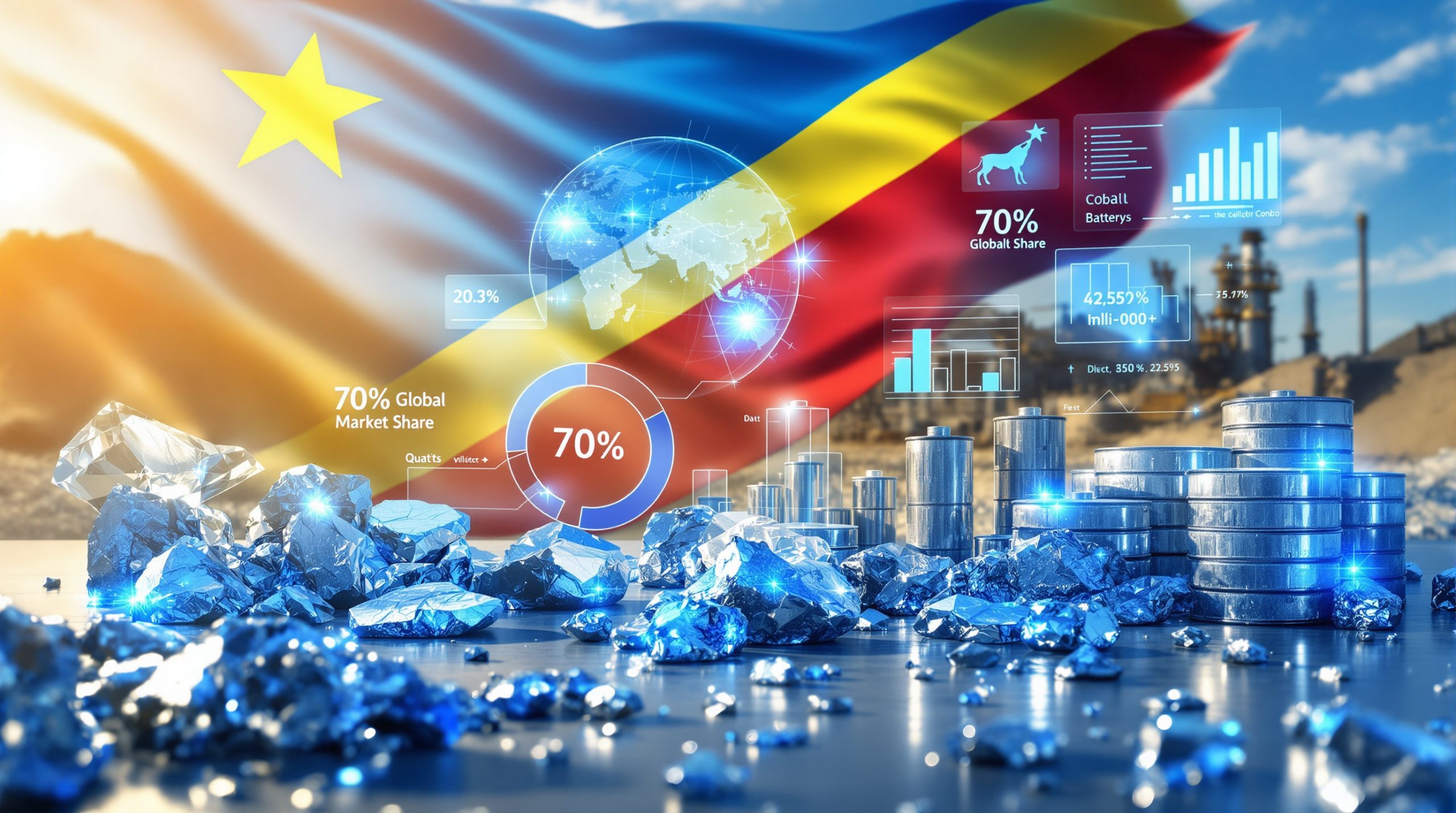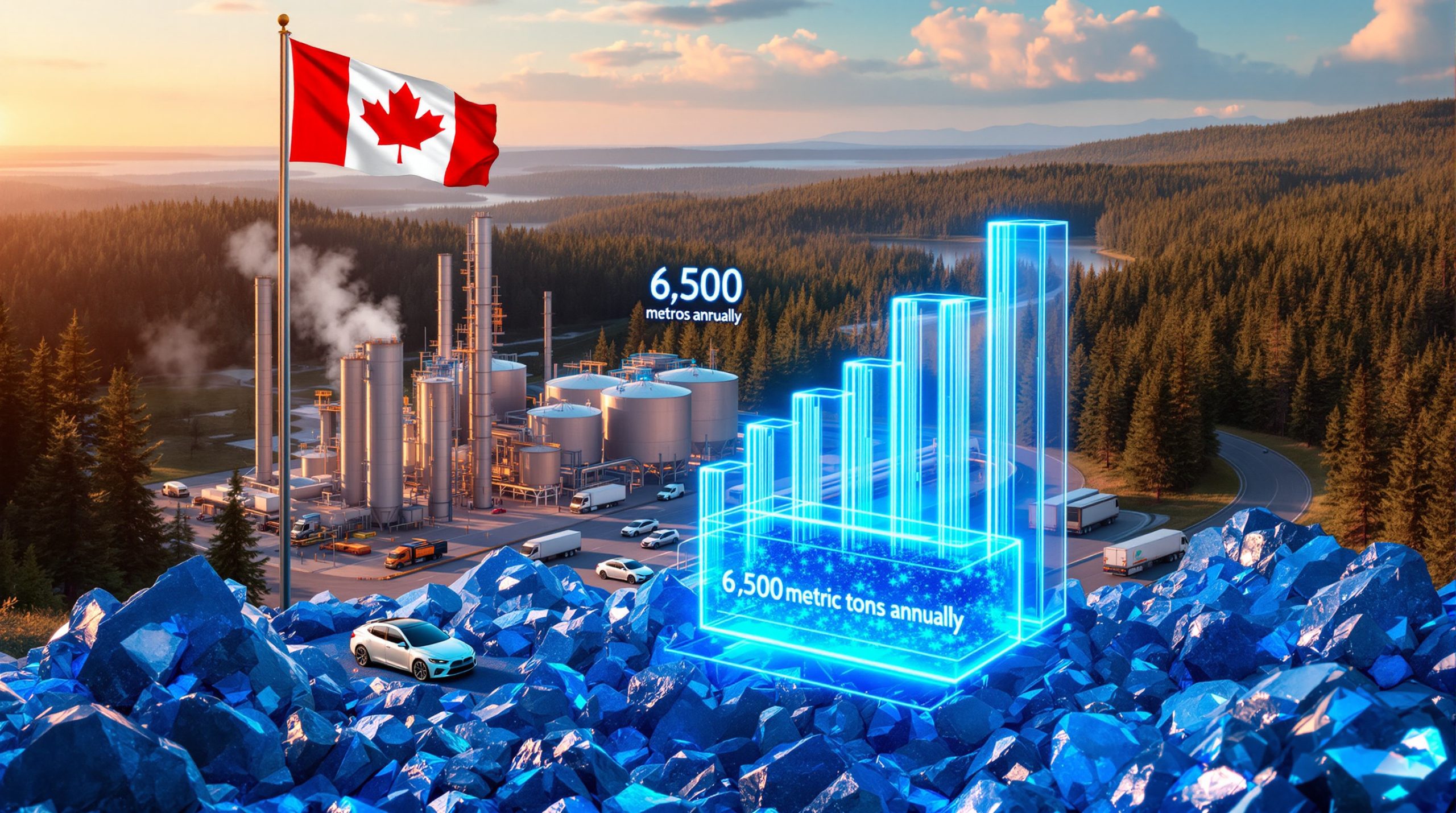Guyana's Transformative Oil Boom: How Petroleum Wealth Shapes the 2025 Election
Since commercial production began in 2019, Guyana has undergone a remarkable economic transformation fueled by its offshore oil discoveries. This small South American nation now ranks as the world's fastest-growing economy, with GDP growth regularly exceeding 40% annually in recent years. The shift from a primarily agricultural economy to an energy powerhouse has generated unprecedented government revenue, creating both opportunities and challenges as the country navigates this newfound wealth during the Guyana election oil boom.
The scale of transformation is striking by any measure. Before oil discoveries, Guyana relied heavily on agriculture, mining, and remittances from its diaspora. Today, petroleum exports dominate the economic landscape, with production reaching approximately 600,000 barrels per day in 2025. Industry projections suggest output could exceed 1.2 million barrels daily by 2027—an extraordinary volume for a nation of just 800,000 people.
Economic Indicators of Guyana's Oil Boom
| Economic Measure | Pre-Oil (2018) | Current (2025) | Percentage Change |
|---|---|---|---|
| Annual GDP Growth | 4.1% | 41.5% | +910% |
| National Budget | $1.3 billion | $5.1 billion | +292% |
| Foreign Reserves | $528 million | $2.7 billion | +411% |
| Unemployment Rate | 13.8% | 8.2% | -41% |
| Per Capita Income | $4,979 | $21,000 | +322% |
What Are the Key Election Issues Related to Oil Wealth?
The 2025 Guyanese election has become a referendum on petroleum wealth management, with competing political visions offering different approaches to the country's newfound resources. President Irfaan Ali's People's Progressive Party (PPP) administration has built its campaign around infrastructure development and immediate economic benefits, while opposition parties have focused on questions of long-term sustainability, transparency, and equitable distribution.
Resource Management and Transparency
The Natural Resource Fund (NRF), established to manage Guyana's oil revenues, stands at the center of election debates. The PPP government modified the fund's governance structure after taking power in 2020, which critics claim reduced independent oversight. The fund currently holds billions in petroleum revenues, with withdrawal rules designed to balance current spending with savings for future generations.
Opposition candidates have emphasized several key reforms:
- Independent auditing of all oil contracts
- Stronger parliamentary oversight of the NRF
- Publication of all production sharing agreements
- Citizen representation on resource management boards
Meanwhile, the ruling party highlights tangible benefits already delivered through oil revenues, including:
- Expanded infrastructure projects nationwide
- Increased public sector salaries
- Reduced national debt
- Cash transfer programs to vulnerable populations
Infrastructure Development vs. Sustainable Investment
The current administration has prioritized visible infrastructure projects—new highways, bridges, hospitals, and schools—funded directly by oil revenues. This approach has created immediate employment opportunities and tangible improvements in transportation networks, particularly connecting coastal regions with the resource-rich interior.
Opposition platforms question whether this rapid spending prioritizes short-term political gains over sustainable development. They advocate for:
- Greater investment in renewable energy projects
- Diversification beyond petroleum dependency
- Higher education funding to build local technical capacity
- Sovereign wealth preservation for future generations
How Has Oil Revenue Changed Government Spending?
Guyana's national budget has expanded dramatically since oil production began, growing from approximately $1.3 billion in 2018 to over $5 billion in 2025. This unprecedented fiscal expansion has enabled public investment across multiple sectors at levels previously impossible for the small nation.
Major Budget Allocations from Oil Revenue
| Sector | 2025 Allocation | Percentage of Budget | Key Projects |
|---|---|---|---|
| Infrastructure | $1.7 billion | 33% | Demerara River Bridge, Linden-Lethem Highway |
| Education | $875 million | 17% | 35 new schools, university expansion |
| Healthcare | $620 million | 12% | Six regional hospitals, medical training |
| Housing | $410 million | 8% | 50,000 housing unit initiative |
| Agriculture | $360 million | 7% | Irrigation systems, flood control |
| Security | $310 million | 6% | Border security enhancement |
| Social Programs | $290 million | 5.7% | Cash transfers, pension increases |
The government has also allocated significant funds to reduce the national debt burden, which has fallen from 61% of GDP in 2018 to under 25% in 2025. This fiscal transformation has improved Guyana's credit rating and borrowing capacity, though debate continues about whether debt reduction should be prioritized over immediate social spending.
What Challenges Does Guyana's Oil Boom Present?
Despite the economic windfall, Guyana faces significant challenges in managing its petroleum resources effectively. These challenges have become central to election debates as voters consider which leadership team can best navigate these complex issues.
Economic Inequality and Distribution
While GDP per capita has risen dramatically, wealth distribution remains highly uneven. Approximately 36% of Guyanese citizens continue to live below the poverty line despite the oil price rally. This disparity has fueled campaign promises from all parties about how to ensure oil benefits reach all citizens.
The ruling party points to several distribution mechanisms:
- Cash transfer programs reaching 200,000 households
- Utility subsidies reducing electricity costs
- Free education initiatives
- Housing development programs
Opposition candidates counter with alternative proposals:
- Direct dividend payments to all citizens
- Community development funds for resource-affected regions
- Indigenous rights protections and compensation
- Progressive taxation to reduce inequality
Environmental Concerns and Climate Commitments
Guyana faces the paradox of developing fossil fuel resources while maintaining its commitments to environmental protection. The country has historically marketed itself as a carbon-negative nation due to its vast rainforests, which now conflicts with its growing petroleum sector.
Environmental issues in the campaign include:
- Offshore drilling safety and spill prevention
- Forest preservation commitments
- Carbon credit programs
- Renewable energy transition planning
Both major political coalitions have promised to maintain Guyana's Low Carbon Development Strategy, though with different emphases on implementation timelines and funding priorities.
How Does the Venezuela Border Dispute Impact the Election?
The long-standing territorial dispute with Venezuela over the Essequibo region—which contains significant offshore oil deposits—has intensified since major petroleum discoveries. This geopolitical tension has influenced election rhetoric, with candidates positioning themselves as defenders of national sovereignty.
In December 2023, Venezuela held a referendum claiming sovereignty over the Essequibo region, which comprises approximately two-thirds of Guyana's territory. This provocative move heightened tensions and brought international attention to the dispute.
Security and Diplomatic Implications
The border dispute has elevated national security concerns in the campaign, with candidates outlining their approaches to:
- Military modernization and border protection
- International alliance building
- Diplomatic engagement strategies
- Legal proceedings at the International Court of Justice
The ruling PPP has emphasized its diplomatic success in rallying international support against Venezuelan territorial claims, while opposition parties have called for greater military investment and stronger deterrence capabilities.
What Role Do International Oil Companies Play?
ExxonMobil leads the consortium developing Guyana's offshore resources, partnering with Hess Corporation and CNOOC. These international oil companies wield significant influence in the country's economic development, with their investment decisions shaping Guyana's production trajectory.
Contract Terms and Renegotiation Debates
The production sharing agreement signed with ExxonMobil in 2016 has become a contentious election issue. The current terms provide Guyana with a 2% royalty plus 50% of profit oil after cost recovery. Critics argue these terms are too favorable to the oil companies, while defenders point to the high-risk exploration environment that existed before proven discoveries.
Opposition candidates have called for:
- Renegotiation of existing contracts
- Higher royalty rates for future developments
- Stricter local content requirements
- Enhanced environmental liability provisions
The ruling party has generally resisted calls for contract renegotiation, arguing it would damage Guyana's reputation for investment stability, while emphasizing incremental improvements to terms for new blocks.
How Is Guyana Managing Its New Wealth Long-Term?
The Natural Resource Fund represents Guyana's primary mechanism for managing petroleum wealth across generations. The fund's structure and governance have become central to election debates about intergenerational equity and fiscal responsibility.
Sovereign Wealth Management Approaches
Different political visions for the fund's management include:
Current Government Approach:
- Flexible withdrawal rules based on development needs
- Ministry of Finance oversight
- Emphasis on current infrastructure gaps
- Mixed portfolio of investments and development spending
Opposition Proposals:
- Stricter withdrawal limitations
- Independent board governance
- Norwegian-style separation from political influence
- Greater emphasis on international investment portfolio
What Economic Diversification Strategies Are Being Proposed?
All major political parties acknowledge the dangers of petroleum dependency and the "resource curse" that has affected other oil-producing nations. Campaign platforms include various approaches to economic diversification to mitigate potential oil price crash analysis impacts.
Beyond Oil: Alternative Development Pathways
Diversification proposals featured in the campaign include:
| Sector | Ruling Party Proposals | Opposition Proposals |
|---|---|---|
| Agriculture | Modernization of sugar and rice industries; agro-processing facilities | Organic certification programs; agricultural technology hubs |
| Tourism | Eco-tourism infrastructure; international marketing campaign | Community-based tourism; indigenous cultural preservation |
| Manufacturing | Industrial parks; export processing zones | Value-added processing of natural resources; technology incubators |
| Services | Financial sector expansion; regional business hub | Digital economy development; remote work infrastructure |
| Energy | Natural gas utilization; petrochemical development | Solar, wind, and hydropower investments; green hydrogen |
How Has Oil Affected Guyana's International Relations?
Guyana's emergence as an oil producer has dramatically elevated its geopolitical significance. Once a relatively overlooked nation, it now receives diplomatic attention from major powers interested in its energy resources and strategic position.
Shifting Diplomatic Landscape
The election campaign has featured competing visions for Guyana's international alignments:
-
Relations with the United States: Both major political groups support strong ties with the U.S., though they differ on emphasis and approach. The ruling party highlights security cooperation and investment facilitation, while opposition parties call for more balanced international engagement.
-
Caribbean Community (CARICOM) Leadership: Guyana's economic transformation has positioned it as a potential leader within the regional bloc, with candidates outlining how they would leverage this influence.
-
China Relations: Chinese investment in infrastructure and resource development has increased, creating debate about appropriate levels of engagement and dependency.
-
Venezuela Management: Approaches to the territorial dispute represent a significant foreign policy difference, with varying emphasis on diplomatic, legal, and security responses.
What Does Guyana's Future Look Like Beyond the Election?
Regardless of the election outcome, Guyana's trajectory as a major petroleum producer is firmly established. Production is projected to continue growing through at least 2030, with current discoveries supporting output of over 1.2 million barrels per day—placing Guyana among the world's top 20 oil producers despite its small population.
Production Growth Projections
| Year | Projected Daily Production | Estimated Annual Revenue |
|---|---|---|
| 2025 | 600,000 barrels | $7.2 billion |
| 2026 | 850,000 barrels | $10.2 billion |
| 2027 | 1,200,000 barrels | $14.4 billion |
| 2030 | 1,400,000 barrels | $16.8 billion |
These projections assume oil prices around $65 per barrel and continued development of discovered resources. The revenue figures represent potential government take before considering investment in development and operating costs.
While these projections are promising, some analysts predict the easing oil prices trend could affect revenue expectations. Furthermore, global policy shifts like the Alaska drilling policy could influence international attitudes toward new petroleum development.
Long-Term Development Scenarios
Election outcomes will influence which development path Guyana pursues:
-
Rapid Infrastructure Development: Continuing the current approach of addressing infrastructure deficits through major public works projects.
-
Sovereign Wealth Accumulation: Shifting toward greater savings and investment of petroleum revenues for long-term returns.
-
Diversification Priority: Focusing oil revenues on building alternative economic sectors to reduce petroleum dependency.
-
Social Development Model: Emphasizing direct benefits to citizens through expanded social programs, education, and healthcare.
Conclusion: Oil Wealth and Democratic Choices
Guyana's 2025 election oil boom represents a critical juncture in the nation's development trajectory. The management of petroleum wealth will shape generations to come, determining whether the country can avoid the "resource curse" that has plagued many oil-rich nations.
The democratic process itself faces challenges amid such high economic stakes. Election observers have noted increased political polarization and concerns about electoral integrity as competition for control of oil revenues intensifies. Additionally, tariffs impact on markets globally could create external pressures on Guyana's economy that transcend domestic policy choices.
For Guyanese voters, the election presents fundamental questions about national priorities: immediate development versus long-term sustainability, consumption versus investment, centralized versus distributed benefits. As reported by Reuters, the outcome will determine how effectively this small nation manages its extraordinary resource wealth in the coming decades. According to The Guardian's analysis, this vote represents "the most consequential election in the nation's history" as citizens decide who will guide their petroleum-fueled future.
Want to Catch the Next Major Mining Discovery?
Discovery Alert's proprietary Discovery IQ model delivers real-time notifications on significant ASX mineral discoveries, allowing you to identify actionable opportunities before the wider market. Visit our discoveries page to see how historic mining discoveries have generated substantial returns for early investors.




